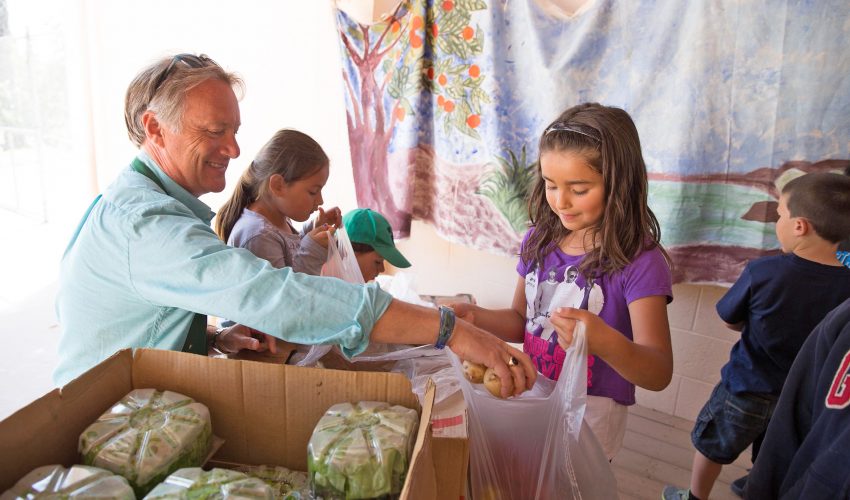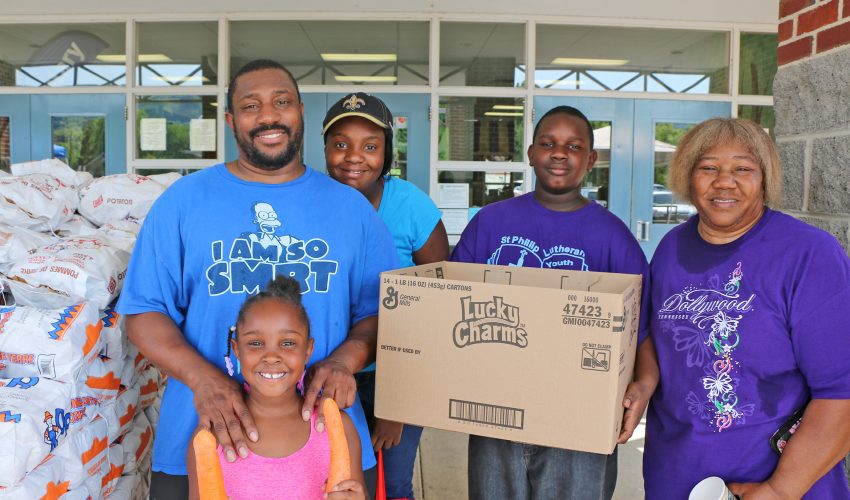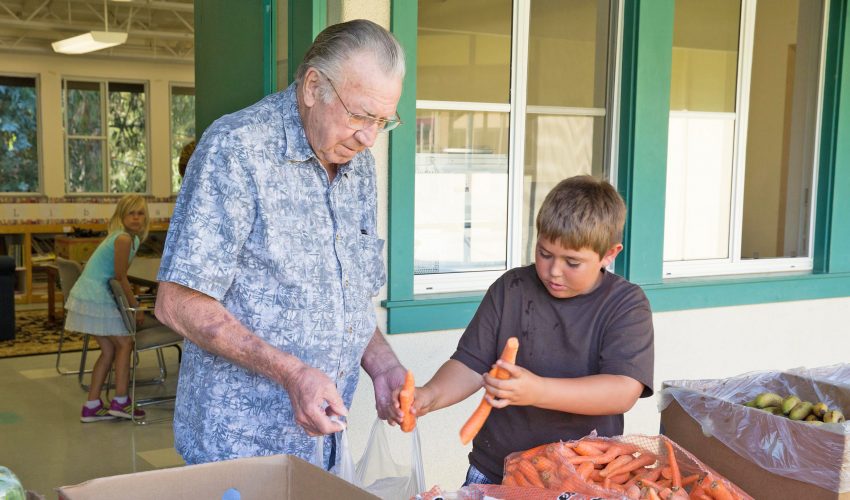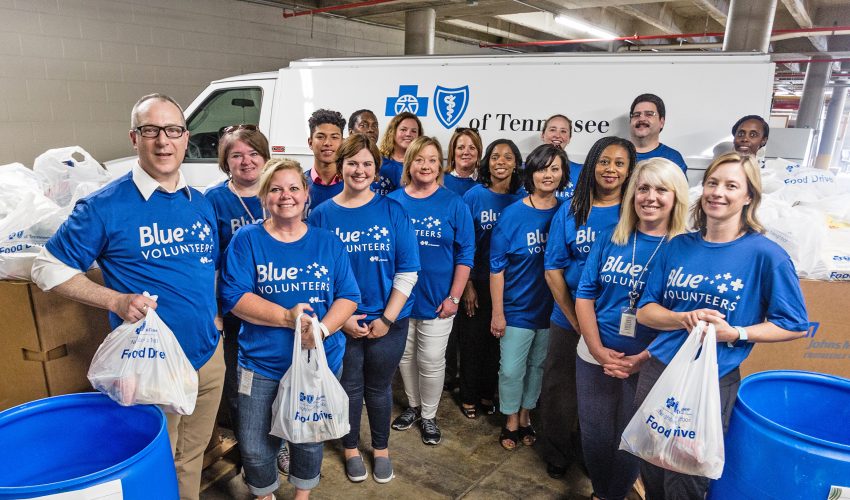When we see so much food all around us, it’s hard to believe that our neighbors may be quietly going to bed hungry.
But Tennessee has one of the highest rates of food insecurity in the nation.
In Chattanooga and its surrounding area, more than 144,000 people don’t have regular access to affordable, nutritious food. These are the people that the Chattanooga Area Food Bank (CAFB) and their 300+ partner agencies serve.

Better Tennessee spoke to Gina Crumbliss, president of CAFB, about who is going hungry and how her organization helps.
Q&A
Better Tennessee: The Chattanooga Area Food Bank’s mission is to lead a network of partners in eliminating hunger and promoting better nutrition in the region. Your website reads: “We bring food to the people of our region who have the need, and the courage, to seek help.”
Tell us a bit about the people the CAFB serves.
Gina Crumbliss: The face of hunger is probably not what you think it is. When I was growing up, the commercials on TV about hunger in the world showed a child in a third-world country with a bloated belly and protruding ribs. But in our country, a child who is hungry may actually be overweight because their parents are trying to stretch their budget as far as they can, and the foods at lower price points are higher in empty calories and fat, and lower in nutritional value.
Moms want to fill their children’s bellies so they give them what they can, but eating that kind of food may lead to obesity and diabetes.
We also know that the majority of folks who need our food have graduated high school — some have college degrees — and at least one person in their household has worked for a paycheck in the past year.
They include bank tellers, nurses, police officers, service industry workers, and construction workers. With 1 in 4 children and 1 in 6 adults being food insecure (lacking access to enough affordable, nutritious food), you most likely interact on a daily basis with someone who is struggling with hunger. You can’t judge if a person is hungry based on how well educated they are, how they are dressed or by the type of car they may drive.
It is important to note that our food is absolutely free to the end consumer — we and our partners do not charge for the food and do not take donations from the client. Our partners are also prohibited from asking those in need to perform a chore or other act of service in exchange for food, and they cannot ask the client to sit through any type of presentation. We don’t ask people to prove they are hungry to receive our food. Rather, people simply need to “self-declare” they are in need, and that takes an enormous amount of courage.

BT: What are the obstacles that your clients face in getting food?
Crumbliss: There is no common denominator. It can be a matter of not earning enough income or earning slightly too much to qualify for government benefits.
For example, one gentleman in his 50s had never needed to ask anyone for help until he was diagnosed with a life-threatening illness. He worked at a job where he would punch in and punch out at a time clock. He didn’t have the option of taking time off to accommodate the radiation therapy treatments for his cancer because he lost money if he wasn’t at work.
He is a proud man, and it’s very hard for someone like him to ask for help.
Another example is a woman who lives in subsidized housing, where one of the requirements for residence is to keep the home up to a certain standard. She had a broken window, and had to pay a fine for that, plus replace the window. It was a nominal amount for most of us — around $40 — but that was bus fare to and from her job. So, she had to depend on friends, family and neighbors for transportation. She was late a couple of times and ultimately was fired. That ripple effect is what can lead someone to need our services.
BT: Are there any other populations you see frequently?
Crumbliss: Senior citizens present a different conundrum. Seniors who live on a fixed income pay for their rent, medication, utilities, transportation and then, finally, food. There are instances of people who turn to eating cat food. And they may not be able to physically come to us, so we have mobile pantries that go to senior centers.
We have actually had some of our senior clients cry when they receive fresh fruits and vegetables because for them, produce is a luxury they cannot afford on their monthly income.

BT: What kinds of donations are best?
Crumbliss: We have a wish list of items on our website that we update regularly.
- Peanut butter is the total package because it contains fiber and protein and is nutritionally dense.
- Dried beans can cost the same as a can of beans, but a bag provides far more servings.
- Canned meats are a luxury and are always appreciated.
- Canned fruits and vegetables are also high in nutritional value.
Large containers are hard to accommodate, so individual or family-size servings are preferred.
Nothing in terms of food taste is off limits. If we get something like brains in gravy or canned beets, there will be someone who will be happy to have it! There are a wide range of cultural food preferences in the Chattanooga community, so we are happy to accept just about anything.
BT: Do you work with clients in any ways beyond distributing food?
Crumbliss: We do. We have a nutritionist on site who partners with students at our local university who are studying nutrition to host cooking demonstrations and taste tests.
When we have food distributions, they often set up a table to prepare foods for our clients to sample and give out recipe cards. Each recipe has five ingredients or less, so they are super simple but also very healthy.

BT: What role do food drives, volunteers and partnerships with companies and other nonprofit organizations play in the work you do?
Crumbliss: We consider our volunteers the heartbeat of our organization, and food drives are the lifeblood.
The work performed by our 3,000+ volunteers on an annual basis is the equivalent of 15 full-time employees.
The cost we would have to pay those employees is around $875,000. Because we can take $1 and stretch that into four meals, that would take 3.2 million meals out of the system. That is how valuable our volunteers are to our mission. And food drives generated more than 268,000 meals last year alone.
We work with 342 partner agencies in the 20 counties that we serve, including the Salvation Army, Metropolitan Ministries, church pantries, YMCAs, Boys and Girls Clubs and more. They are critical to meeting the need in our region and are responsible for distributing 80% of the food we source. In our area, odds are if an organization is helping to feed those in need and meets our criteria, they probably get the majority of their food from us. They may conduct their own food drives, but they have to supplement their inventory with our food.
Companies like BlueCross BlueShield of Tennessee (BCBST) make our mission possible through their generous support. For years, we have enjoyed the volunteer participation of Team Blue members at mobile pantries and at our warehouse. But when BCBST recently learned food donations had sharply decreased, they leapt into action by organizing and hosting a food drive.
Their generosity and continued support are so important to our ability to continue feeding our neighbors.



